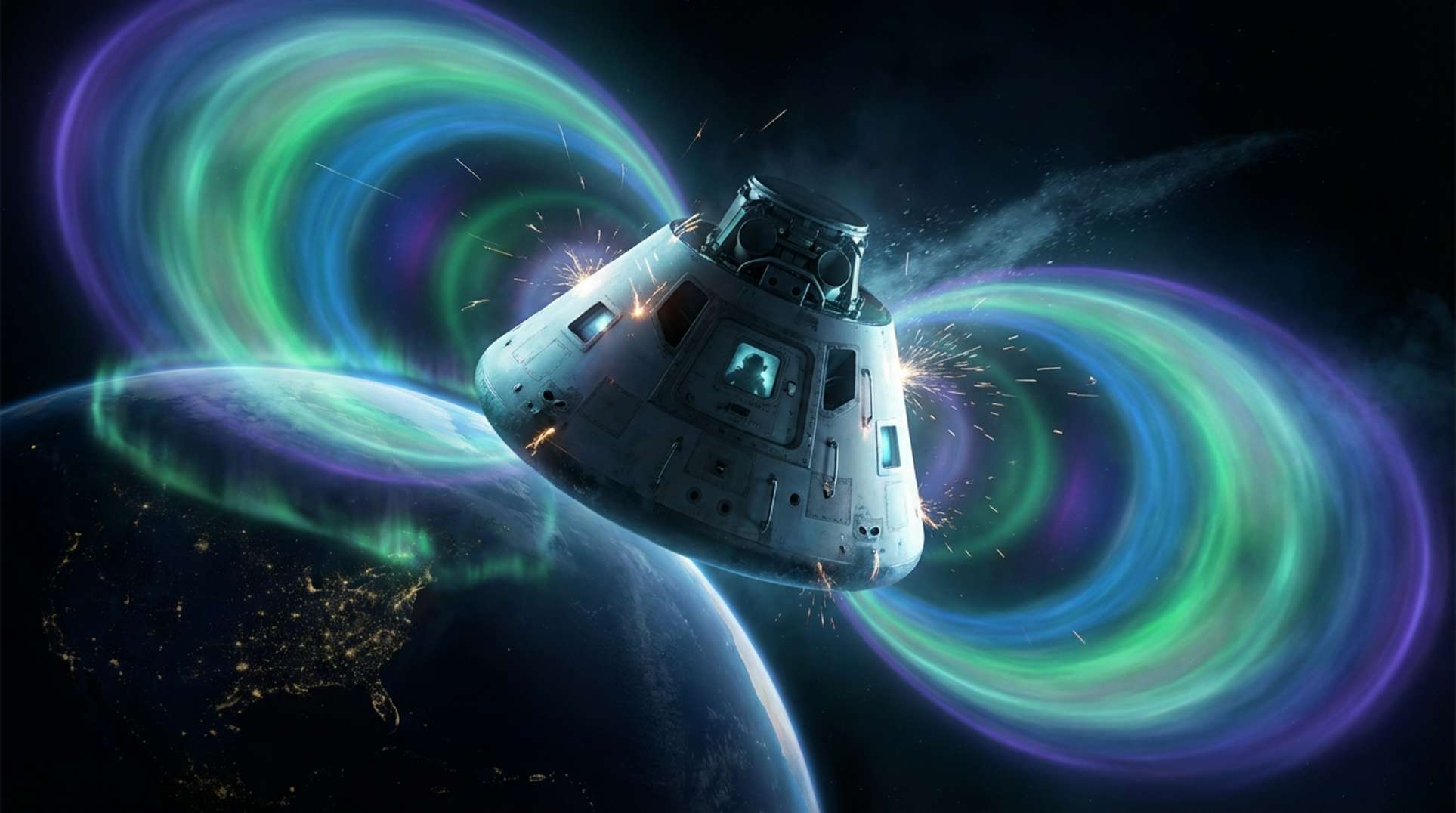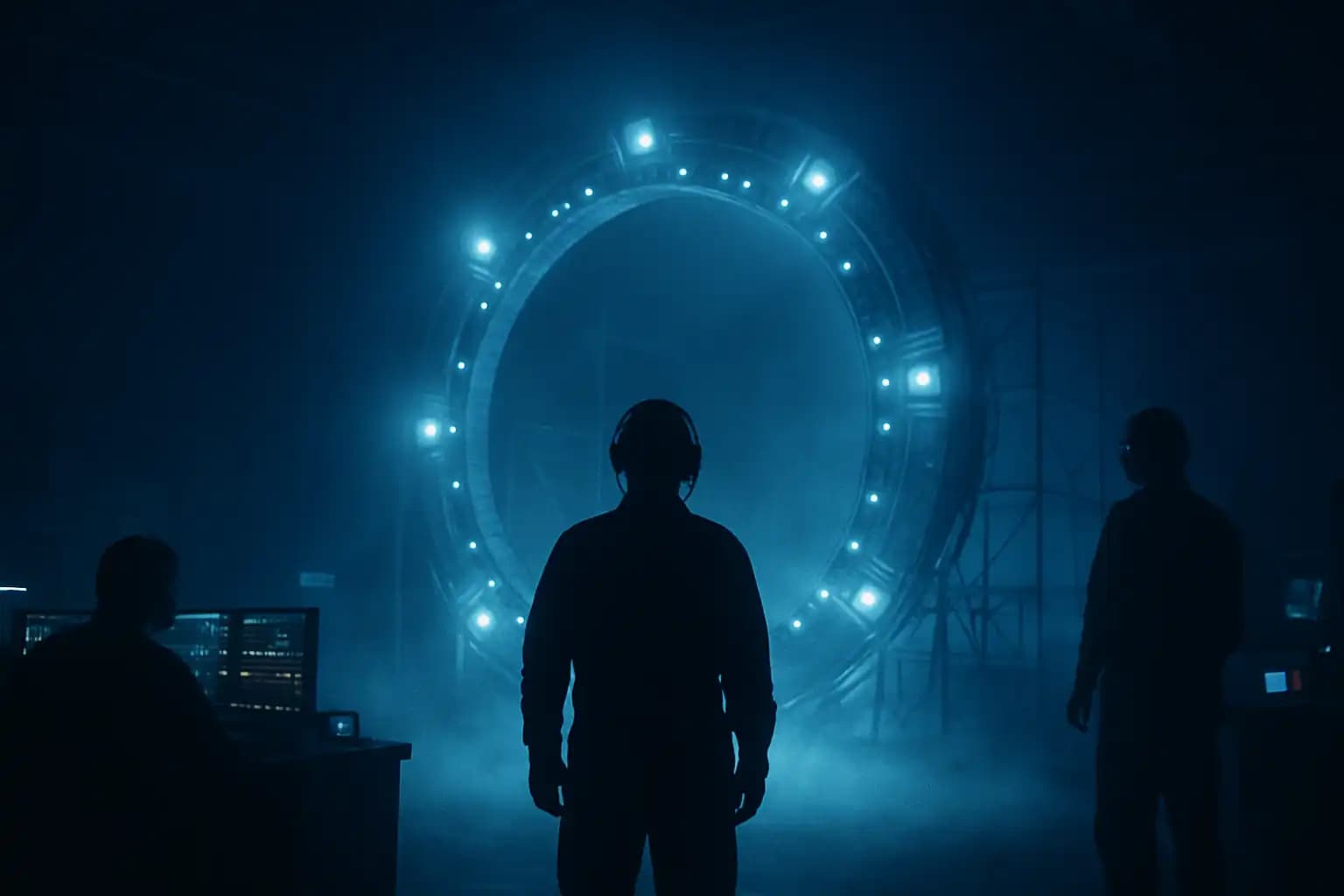Through the ‘Deadly’ Van Allen Belts: How Apollo Really Reached the Moon
Key Takeaways (TL;DR)
- The Van Allen belts are regions of trapped charged particles around Earth, not an impenetrable wall of instant death.
- Apollo spacecraft spent only about 1–2 hours per leg in the belts and followed trajectories through thinner regions, keeping astronaut doses between 0.16 and 1.14 rads (1.6–11.4 mGy) for entire missions—far below lethal levels and comparable to a medical CT scan.
- Aluminum shielding (about 2–5 g/cm²) plus careful mission timing and trajectories made radiation a manageable engineering problem, not a show-stopping barrier, which is why James Van Allen himself called the ‘fatal radiation’ claims “nonsense.”
The Fear Above the Sky: How a Hidden Radiation Belt Became a Boogeyman
Earth wears them like unseen crowns. The Van Allen belts, discovered in the late 1950s—halos of charged particles, invisible and restless. Circling our planet. They caught the imagination fast. A reputation built on whispers of danger, the kind that lingers in the mind’s shadowed corners.
Intuition tugs at you. If even the low orbits we know are laced with this radiation, how do humans—fragile, fleeting—slip through to the Moon? Unharmed. The thought settles like static in the air. Unsettling.
Conspiracy tales feed on it. Hollywood stages flickering in basements. ‘Deadly’ belts as the ultimate barrier. Yet reality hums different. Engineering. Equations. Calculated risks. We have the numbers from Apollo itself. Doses recorded, precise. They clash with the myth’s thunder. A contrast sharp as moonlight on film grain.
Are the Van Allen Belts Too Deadly to Cross?
The claim sits at the heart of it. Clear and insistent. Those belts—zones of intense radiation—would fry any astronaut daring the passage. Instant death. No way around it. So the Moon landings? Faked. Filmed on Earthbound sets, some say, with names like Stanley Kubrick tossed in for flavor.
Believers point to shielding. NASA‘s craft couldn’t carry enough without buckling under the weight. Impossible, they argue. The missions—a elaborate ruse.
This thread wove into the broader fabric mid-1970s. Distrust thick in the air after Watergate, Vietnam. Books appeared, self-published tracts. Assertions without the math. The belts as proof positive. Bundled with other doubts: flags rippling in vacuum, stars absent from photos, tech from the ’60s deemed too primitive. Together, they build a case. Persistent. Alluring in its doubt.
What the Numbers Say: How Apollo Actually Dealt with the Belts
Two zones define them. Inner and outer. High-energy protons, electrons—snared by Earth’s magnetic grasp. Apollo planners knew. They charted paths. Not through the thick heart. But the edges. Thinner. Safer.
Transit was brief. One to two hours each leg. Round trip? Roughly three hours total in the belts.
Doses measured. Real data from the missions. Astronauts absorbed 0.16 to 1.14 rads overall. That’s 1.6 to 11.4 mGy. Including deep space, lunar stays.
Apollo 14 topped the list. 1.14 rads—0.0114 Gy. Still distant from harm.
Apollo 11? Skin dose at 0.18 rad. Iconic. Grounded.
Danger thresholds loom higher. Acute lethal doses: 300–500 rads. Sickness kicks in well beyond single rads.
Shielding helped. Aluminum hulls, structures—2–5 g/cm². Enough to blunt protons, electrons during the dash.
Rates in the worst spots? Around 0.044 Sv per minute, shielded. But paths chosen wisely. Time limited. Totals stayed low.
Think chest CT scan. That’s the scale. Not Chernobyl’s glare.
| Mission/Threshold | Radiation Dose (rads) |
|---|---|
| Apollo 11 | 0.18 |
| Apollo 14 | 1.14 |
| Full Apollo Range | 0.16–1.14 |
| Lethal Acute Dose | 300–500 |
NASA’s breakdowns show more. Solar particles outside the magnetosphere often outweighed belt exposure. A constraint, yes. Not a wall.
Radiation Is Real – So Why Was Apollo Safe?
Space radiation bites. No denying it. Particles slice through, tampering with DNA. Cancer risks climb. High doses? Sickness. Death. Real threats.
But nuance matters. Dose and duration. A zone lethal for lingering days turns passable with speed and shields. Quick transit. Calculated.
James Van Allen spoke plainly. The fatal radiation notion? “Nonsense.” He affirmed: trajectories and shielding kept it in check.
NASA echoed. Van Allen’s own calculations opened the way—through weaker regions to the void beyond.
Experts at Royal Museums Greenwich agree. Fast enough for the Moon? The belts pose no issue.
Wikipedia, NASA summaries align. High speeds through upper, thinner belts minimized hazards.
Scientists modeled. Calculated. Timed launches. Built defenses. Risks bounded, acceptable.
Contrast with Mars treks. Long hauls amplify cumulative threats. Experts grapple, not dismiss.
Conspiracists spotlight gaps, claim impossibility. Data and consensus push back. Measured. Firm.
Speed, Trajectory, and Ingenuity: How We Really Reached the Moon
Two levers unlocked it. Speed. And paths through the belts’ sparse fringes, not the dense cores.
Doses across Apollo? 0.16–1.14 rads. Worlds from lethal 300–500. Akin to routine scans.
Aluminum at 2–5 g/cm². Transits capped at 1–2 hours each way. Trajectories precise. Risk transformed—from barrier to equation.
Van Allen dismissed the myths. Science concurs: a puzzle solved, not a veil for secrets.
The myth clings. Physics simplified to terror. ’70s skepticism. Cover-up’s drama over engineering’s quiet grind.
Yet grasping Apollo’s solution illuminates. History defended. And a lesson: science, ingenuity—they render Earth’s radiation halo mere footing. Toward stars uncharted.




